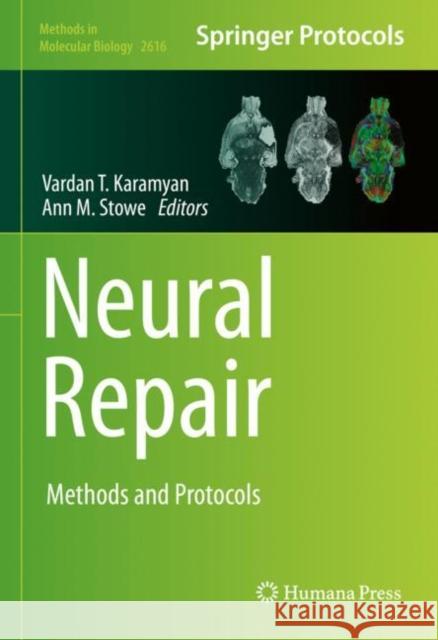Neural Repair: Methods and Protocols » książka
Neural Repair: Methods and Protocols
ISBN-13: 9781071629253 / Angielski / Twarda / 2023 / 492 str.
Neural Repair: Methods and Protocols
ISBN-13: 9781071629253 / Angielski / Twarda / 2023 / 492 str.
(netto: 843,44 VAT: 5%)
Najniższa cena z 30 dni: 848,19
ok. 22 dni roboczych
Dostawa w 2026 r.
Darmowa dostawa!
This detailed collection explores a diverse range of topics related to neural repair and functional recovery following ischemic stroke. Techniques detailed in this book span from basic to emerging approaches used to evaluate hallmarks of neurorepair, including axonal remodeling and dendritic arborization, plasticity and functional connectivity, angiogenesis, neuroinflammation, and recovering cerebral blood flow. In addition, several chapters focus on rodent stroke models and post-stroke functional evaluation, clinically-relevant therapeutic paradigms and co-morbidities, pharmacotherapy and methods of delivery. Written for the highly successfulMethods in Molecular Biologyseries, chapters include introductions to their respective topics, lists of the necessary materials and reagents, step-by-step and readily reproducible laboratory protocols, as well as tips on troubleshooting and avoiding known pitfalls.Authoritative and practical,Neural Repair: Methods and Protocolsserves as an ideal guide for the wide community of researchers interested in neurorepair following stroke and other forms of CNS injury.
This detailed collection explores a diverse range of topics related to neural repair and functional recovery following ischemic stroke. Techniques detailed in this book span from basic to emerging approaches used to evaluate hallmarks of neurorepair, including axonal remodeling and dendritic arborization, plasticity and functional connectivity, angiogenesis, neuroinflammation, and recovering cerebral blood flow. In addition, several chapters focus on rodent stroke models and post-stroke functional evaluation, clinically-relevant therapeutic paradigms and co-morbidities, pharmacotherapy and methods of delivery. Written for the highly successful Methods in Molecular Biology series, chapters include introductions to their respective topics, lists of the necessary materials and reagents, step-by-step and readily reproducible laboratory protocols, as well as tips on troubleshooting and avoiding known pitfalls.











